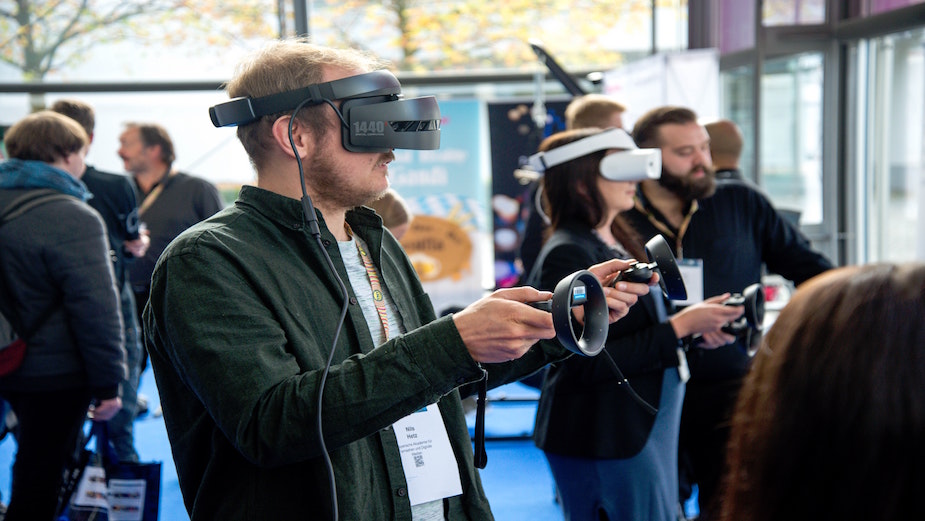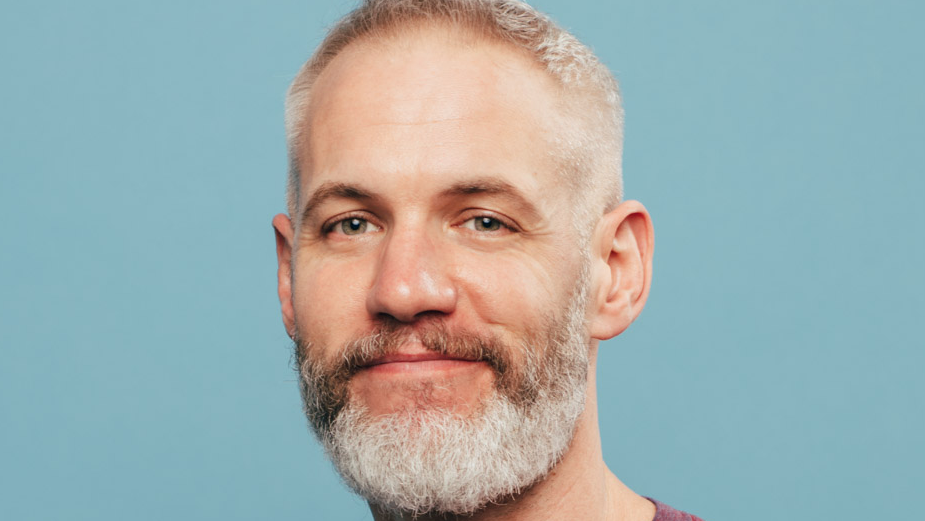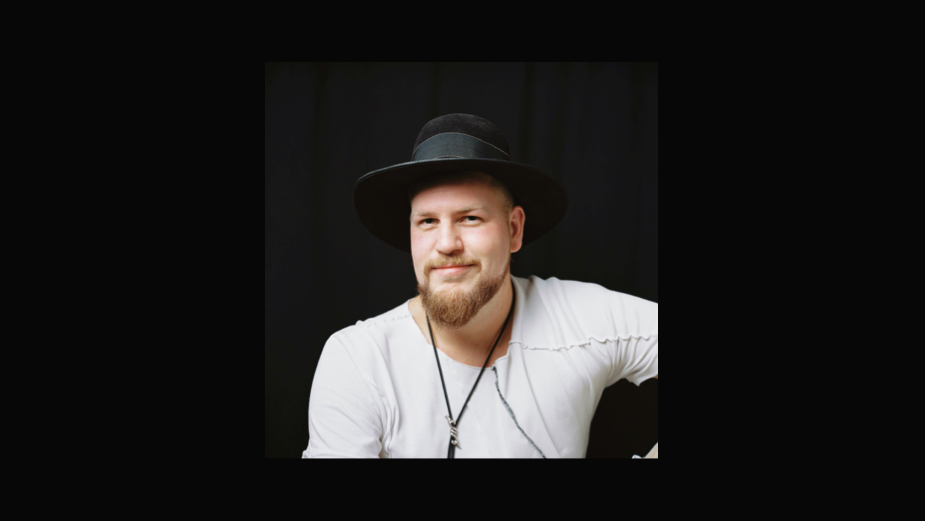
“Netflix Is Not Enough”: Are Virtual and Augmented Reality the Perfect Lockdown Partners?

Now, more than ever, we are consuming virtual reality by the bucket load. Even those who may have never so much as had a conference call are finding this and other alternative methods of communication a huge part of everyday life. LBB’s Natasha Patel spoke to agencies and production companies to find out the effect this is having on their businesses and how adapting comes with its challenges as well as fun.
Sol Rogers, CEO at REWIND.

The pandemic has bored millions, even Netflix is not enough. As we look for new distractions, virtual reality has never been more popular. There has been a significant spike in audiences streaming VR content and watching 360° video, record numbers of people are using social VR platforms, and most VR headsets have sold out or are incredibly hard to find.
VR is the perfect lockdown partner due to its unique property — ”presence” — the feeling of being physically present in a virtual world. When you put on a VR headset, you are removed from the real world and transported to another. It is a very powerful sensation. With no distractions from social media or TV broadcasts, it really can provide a means of escape from the current confines of our reality. But, it’s not just the entertainment side of VR that is seeing an upswing.
As working from home becomes the new normal, VR communication and training platforms are seeing a huge increase in usage. One of the biggest benefits of the medium is its ability to make people feel like they are in the same space together. These virtual environments can be designed for optimal comfort, productivity, and creativity. You can share and work together in real-time in a truly collaborative manner. You can import custom environments or 3D objects, and you can work together via interactive whiteboards. Participants can also revisit simulations to better process and record the content.
Virtual reality has never been more relevant. We have been inundated with inquiries from businesses looking to use VR and other immersive technologies. This increase in appetite will continue even after social distancing measures end because extended reality is the future. This pandemic is just getting us there a little quicker.
Geert Eichhorn, innovation director at MediaMonks

Being at home during the lockdown hasn’t really bothered me, I don’t feel the need to escape to VR more than before, I guess a vivid imagination and a creative mind really help do that without technical assistance. However, I do notice a wider need to connect and that’s what we are recommending to our clients: create virtual spaces for people to connect. In many ways these places are more capable, and offer so much more than brick and mortar have ever been able to do. The first thought is often: let’s recreate my venue’s services exactly as is and put it on my website; but putting your venue on your website is as natural as putting out of home advertising in a banner. It doesn’t really work.
Approaching virtual venues should be done with a digital mindset: leverage the platform, interaction, personalisation and scale. This way of connecting and communicating isn’t just valuable for a brand-consumer relationship, but can also amplify effective communications within teams.
There is an incredible potential, and a drive, from brands to reinvent the digital space and go further than just cookie cutter solutions. VR, enhanced by other technologies such as 360° photography, photogrammetry and gaming engines offer possibilities to create digital experiences that will surpass the real thing.
We can create events and digital spaces that take user experience to a whole new level - right now and long after the pandemic.
Wayne Deakin, executive creative director EMEA at Huge

When you first think of VR and AR you probably think of ‘escaping’ as that’s the most common use most people have experienced during lockdown I am guessing. The capabilities to take you to other places are an obvious benefit when everyone’s getting cabin fever.
As we get more familiar with being connected through screens it is obvious why brands are promoting and inspiring consumers to experience different things via VR and AR. In the travel industry, I’ve seen hotels and destinations putting more stuff out as ‘taster’ content to create interest or pre-booking after lockdown. Airlines too have created or even republished a few things to keep the brand experience front-of-mind when we can’t fly.
My guess is that after lockdown we could see brands unlock the real benefits of virtual experiences to help streamline the hurdles for all sorts of more everyday meaningful utility needs— banking, shopping, working, healthcare, etc. More progressive brands have started to explore the various platforms beyond entertainment and I think we will see more of that.
For physical retail, which is hard hit, capacity constraints are a real issue—the result of the “digital shelf” not being ready yet for this level of public demand might come because companies have repeatedly deferred prioritization of full-scale ecommerce. But with more people comfortable with digital and with 5G speeds coming online we could see more and more powerful utilizations of utility come on your radar soon.
I’ve been exploring with Google’s Expedition app and it’s been cool to see some interesting places in amazing detail. As we work with Google it's cool to see them doing more good stuff in this area. I am keen to explore Littlstar VR Cinema as it lets you watch content from Netflix, Hulu, and YouTube. Next on the list would be the PlayStation VR. Gaming is definitely a sector that has seen growth in virtual and mixed realties.
Colin Davis, executive producer at Nexus Interactive Arts

At the moment I’m working on an NDAed project, which uses augmented reality to help visualise anatomical data in a totally new way which is definitely an escape from the normal presentation of data!
I’ve seen a big uptick in my friends with kids using these mediums and it’s great to see people (perhaps unwittingly) unpicking the potential of AR and VR as an imaginative tool for escapism and learning. For example, Google’s AR Animals have proven to be extremely popular (largely thanks to a certain Tiger King!). We created 5 of the 3D creatures for Google’s AR search, including the Bengal Tiger and it’s been great to see the ways in which families are engaging with AR technology, using it as a start of a lesson or instruction.
Personalised XR (augmented / virtual reality / mixed reality) experiences or bespoke apps and games are a great way to captivate audiences through imaginative and interactive content. AR in particular can be very sociable.
In terms of an interest from clients, we’ve seen an increase. There have been a number of ways where brands are looking to bring content into the home. In particular, people are looking at how to use products or environments in their home to be able to connect with people - a bit like ‘digital-experiential’. Also, of course, we are seeing a resurgence around VR. This has been coming for a while with the great success of Oculus’s Quest but all of the VR headsets have been sold out worldwide. There is a hunger for being immersed in worlds outside of your living room!

Luke Vink, creative technologist at Studio Kraftwerk

As Achtung! / Isobar is an incredibly social office, one with a rich culture of humour and friendship; it was clear that social distancing would attack that culture. Simultaneously, clients were looking for ways to shift their events into an online space.
The research we did here led to finding a way to create a web VR version of our entire office, filled with all of the social humour and togetherness we were sorely missing. We hosted Friday night drinks in our new virtual office with great success, giving everyone a taste of one of the best benefits of VR - social connection at a distance.
I have now continued to explore VR both in web and headsets like the Oculus Quest, to see how we might effectively leverage its benefits, with the occasional escape to the insanely realistic world of “half life alyx” to kill some zombies and let off some steam.
VR and AR have come a long way, but if you don’t have a fancy headset it’s difficult to experience this. On the Oculus Quest or HoloLens 2 for example, your hands are tracked to such precision that you can literally hold virtual objects and move them around as if they were real. One of the main issues, of course, is that to have a quality experience, everyone requires an expensive headset.
Right now, VR feels like isolating by design - amazing for connecting remote people, yet tricky for retaining connection with the people next to you. AR however is a different story. If Apple or Google were to release an AR product that overcomes the last hurdles in the technology and for an affordable price, the products would spread as fast as the coronavirus itself.
We recently hosted an Easter egg hunt for KPN and we built WeTransfers’ Amsterdam office much like we did our own with Mozilla hubs. We are also now in talks with a client from Tokyo. As technology matures and more experience its benefits, it is becoming increasingly clear to companies and individuals that having an alternate reality isn’t as crazy or unachievable as they thought before.
Carsten Keller, creative director at MPC

As the Covid-19 crisis rapidly unfolds and shoots are either delayed or cancelled, we’re seeing virtual productions become extremely popular with clients.
Travel and access to locations will be disrupted for some time, however directors can still shoot at MPC virtually; through virtual production, the director can continue to do tech scouts and recces using virtual viewfinder on iPads or iPhones. Directors can influence the shoot via screen share and control cameras in a virtual session together with MPC artists, allowing them to get a real look and feel and make decisions quickly without the need for a live production.
We can also help make creative decisions in real-time, and create virtual storyboards and sets including stairs, walls, football pitches, lighting etc, the director can then enter the virtual set and direct remotely, we used this technique on The Jungle Book and The Lion King.
In particular, virtual production it’s popular with tech-savvy directors, who initially have a lot of questions about their involvement, pre-vis and virtual storytelling. We work on the shoot together, the director can set up cameras in real-time, without having to wait for renders, allowing all bounds of presenting feedback in real-time - it’s changing how we’re doing everything.













